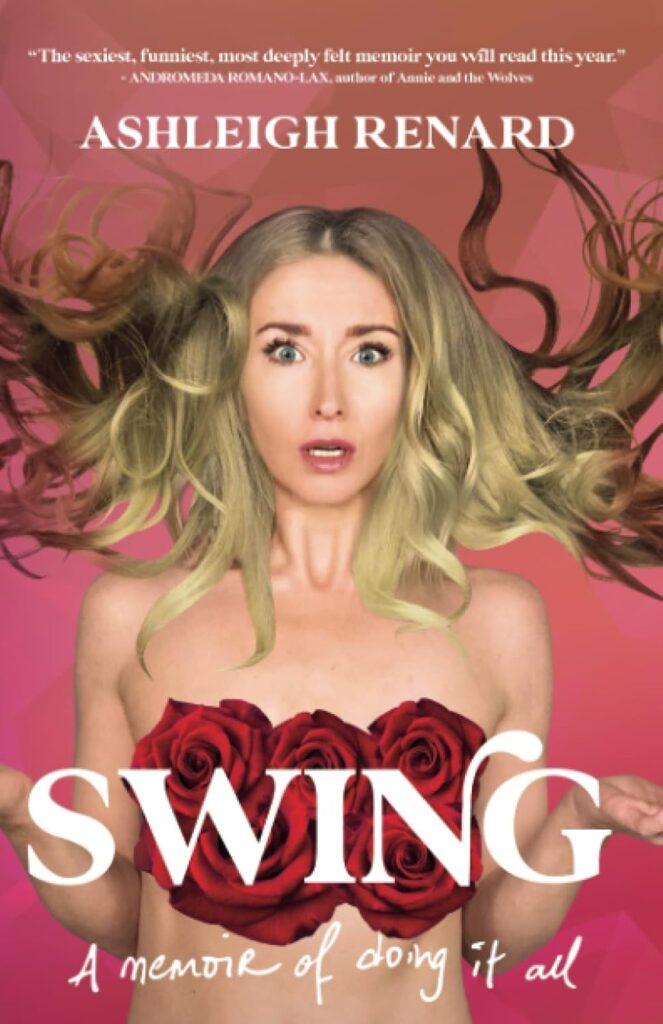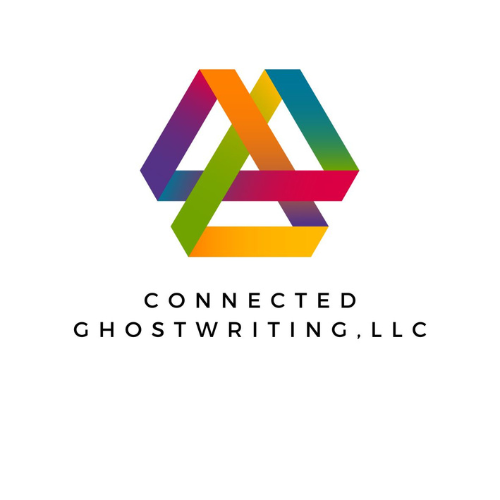Sometimes, I fan-girl pretty hard. This is one of those stories. We all know big names like Rachel Hollis or Glennon Doyle, who have huge platforms and sell piles of books. But what about the indie authors who go from no audience to bestseller lists and a cult following?

In 2021, the algorithm gifted me Ashleigh Renard, who’s first book, Swing, was a runaway success. The algorithm thought I’d like her because I was deep into writing sexual health content for clients, and Ashleigh’s storytelling immediately drew me in. Over time, I’ve recommended her social media to clients as a model for how self-published authors can connect with their readers. She’s witty, authentic, and knows how to turn her experiences into marketing gold.
When I learned she’d launched Renard McGillen Author Services with editor Jamie McGillen, author of The Rainier Series, I couldn’t resist reaching out.
As someone who regularly explores publishing options for my clients, including Amazon KDP, IngramSpark, and print-on-demand options through POD services, I’m always researching strategies to help independent authors succeed. I finally won the battle with my imposter syndrome (fan-girl problems) and sent a DM. Within days, we had a call, and Ashleigh’s warmth and energy were captivating.
I invited her to a conversation about the self-publishing world to help authors make informed decisions about their books. Here’s our Q&A, with real insights from one of the best in indie publishing.
Some people see self-publishing as a failure to secure a “real” publishing deal or as vanity publishing. What do you say to that?
Well, let’s break down vanity. You have a book that you want published that you are the only person who cares about right now, right? That’s vanity and self-importance, and I would love it if all people were self-important about their work. Nobody else is going to be, nobody else is going to care about your book like you do—not an agent, not a publisher. So, why not go through the publishing process on your own and claim ownership?
Did you set out to self-publish initially?
Like a lot of authors, I wanted to find a traditional publishing deal, which ended up feeling like waiting to be tapped on the head and told you’re good enough. I was from a really, really small town, so I’ve been waiting my whole life to be tapped on the head, you know?
I found an agent for my book really quickly. And then I realized, wow, I don’t like this. Now I’m waiting to be tapped by a publisher and that just felt really ick to me. Sure, it’s one way to do things in the book world, But what we’re seeing so much, especially with songwriters, is we’re realizing how little of a slice the talent gets in a traditional, huge machine publishing or distribution network. There are a lot of people to feed. So the amount of money that the artist gets is minuscule, and that is the person with the talent.
Wait, you had an agent but ultimately decided to self publish, tell me more.
Yeah, I signed with an agent who was very enthusiastic about Swing. The agent pitched it as a “swinger’s book” which I felt didn’t accurately represent the nuances of the story and turned some readers off. Even though the agent was able to get the book optioned for film, I didn’t like the agent’s overall strategy and positioning of the book. I struggled to get the agent on the phone and felt like I didn’t have enough input or control over the process.
I didn’t love having my creative work pitched by someone else, and I wasn’t at a point where I could effectively advocate for myself against the agent’s authority. When I chose self-publishing, I felt like a failure—that’s really how I saw it at the time.
Ok, so tell us about that failure. How did it go?
Self-publishing gave me complete control over my story, from book cover design to distribution. Swing has sold 22,000 copies to date, and I’ve made over a million dollars from book sales, audiobook sales, and other pieces I created for the audience I developed, like my after-dark workshops. It was also the foundation of my connection with my readers and is supporting the successful launch of my second book, Split: A Memoir in Pieces, which is priceless.
Many people don’t realize how much bigger the royalties are when you self-publish. In a traditional publishing company, the artist is lucky to get 20% because of how many other people need to get paid. I get 70% royalties for my books from Amazon. That’s an incredible difference.
So your “failure” came with a million-dollar reward?
Yep. Traditional publishing doesn’t always offer the best route, especially if you’re an independent author who values creative control and a strong reader connection. Self-publishing platforms like Amazon KDP (Kindle Direct Publishing) and IngramSpark give you options for high-quality, print-on-demand books that reach readers directly. If traditional publishing makes you feel boxed in, self-publishing is a powerful alternative.
What is one thing you want to make sure authors know about self-publishing?
You have to be willing to put in the work and do some trial and error. Early on, I spent tons of time trying different things on social media to see what worked. I spent money on ads and the publishing process. It’s all worth it, but it’s definitely a ton of work. I made 20,000 Instagram stories in the last four years, which served as a way to practice and get real-time feedback on my storytelling.
The Keys to Self-Publishing Success
I asked Ashleigh to share what contributed to her success, and she shared tons of info for other authors. Here are the highlights:
Connecting with my audience
Rather than focus on what agents and publishers liked, I attended to my readers first. I made it a priority to understand my readers and what they actually care about. By having direct conversations and testing my storytelling on social media, I could fine-tune my message to really resonate with my target audience. Every story I shared became a mini-experiment, helping me to see what clicked and what didn’t. Instagram Stories was a big part of this—each reaction came straight to me in private, allowing me to adjust and improve my approach as I went.
Building a book marketing army
I didn’t want to just wait around and hope my book would reach people; I wanted readers actively involved from the start. So, I sent Swing to 425 people in advance and collected testimonials and social proof from early readers. This allowed me to build a community of advocates around the book. Their feedback became part of my strategy and gave me a base of readers already invested in Swing before it even launched.
Focusing on my unique voice and perspective
Rather than trying to fit into the boxes traditional publishing often sets, I leaned fully into my unfiltered, authentic style of storytelling. That approach allowed me to stand out and attract readers who wanted that specific tone and mode of communication. Being me—really me—is what connected me with people who didn’t just read Swing but embraced it.
Think of yourself as hosting a conversation, not performing a monologue. Whether you’re posting online or writing a book, be a generous host—invite readers into the conversation. I test my messaging constantly. When people laugh, comment, or say they “spit out their drink,” I know I hit the mark. Your brand lives where your interests intersect with what others care about. Once you find that overlap, you’ll build connections that make people want to keep reading.
Prioritizing creative fulfillment over external validation
When I decided to self-publish, it was a choice to prioritize my own needs and values over seeking approval from traditional publishing gatekeepers. That mindset shift let me focus on serving my readers rather than trying to prove myself to the publishing world. I found so much more satisfaction in creating for an audience I understood rather than hoping to impress people who may not “get” my work.
Leveraging the flexibility and control of self-publishing
Self-publishing gave me the freedom to experiment. I could play with pricing, distribution, and marketing strategies to suit my goals without being limited by traditional publishing structures. I could make quick adjustments based on feedback, and that agility has been invaluable.
Get Support From People Who Know
At Connected Ghostwriting, we don’t recommend one form of publishing over another. However, for authors with an entrepreneurial spirit and strong ideas about how they want their content presented to the world, self-publishing can often be the best choice. Self-published books can have just as much of an ROI as their traditionally published counterparts, and not just because of the increased royalties. There’s something magical that happens when you take your book marketing into your own hands.
Often, the part of self-publishing that people find most challenging is the book formatting, copy editing, and uploading process. We partner with Ashleigh and Jamie of Renard McGillen Author Services to offer a seamless experience for our clients. Ashleigh and Jamie want to help more authors realize the success self-publishing can create. They offer self-publishing services as well as marketing services, so you aren’t left alone to figure it out. Whether you’re a first-time author or looking to increase sales on books you’ve already published, they’re happy to set up a consultation to see if their services are a good fit.


